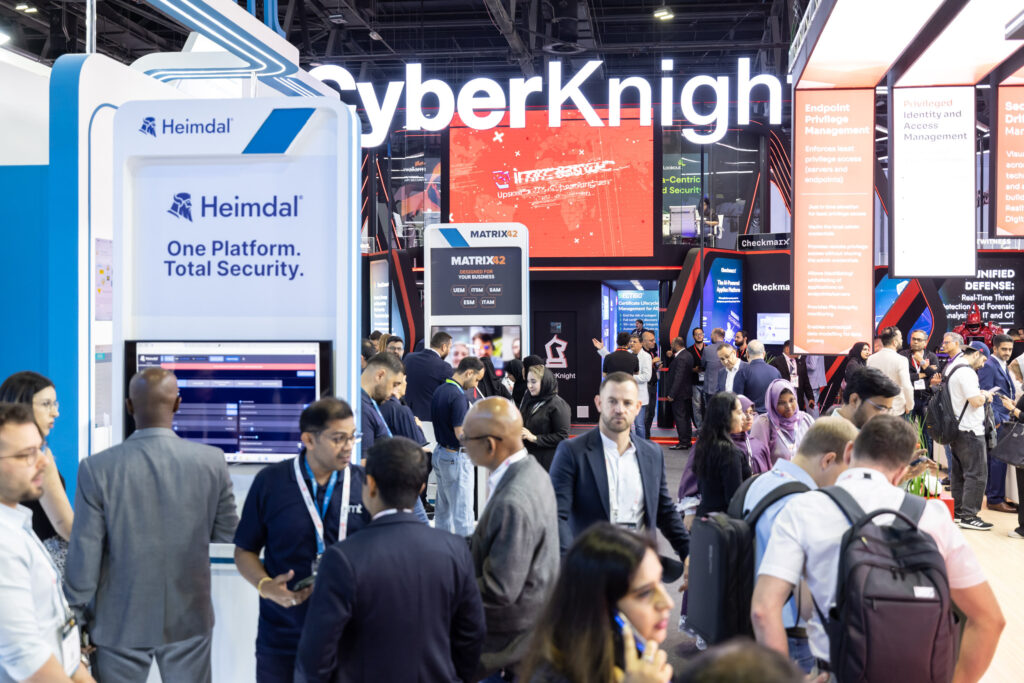GISEC Global 2025 Launches OT Security Conference As Cyberattacks On Critical Infrastructure Surge 49%
As operational technology (OT) cyberattacks skyrocketed 49% in 2024–targeting power grids, oil & gas facilities,factories and transport systems–GISEC Global 2025 is responding with the launch of its pivotal newOT Security track at the Middle East and Africa’s largest cybersecurity event,currently taking place until 8thMay at the Dubai World Trade Centre.
The OT-focused conference at GISEC Global tackled evolving risks, system vulnerabilities and strategies for securing critical infrastructure. Other important considerations included AI in ICS/OT Security, Quantum Computing Threat, Protecting ICS and SCADA Systems & Digital Supply Chains in the presence of top CISOs, CIOs, OT security heads and policy-makers to fortify SCADA, ICS and digital supply chains.
The new addition arrives amid a perfect storm in the industry:
- The global OT security market is projected to double to $44.9 billion by 2029 (Markets and Markets).
- According to research by IBM,the average cost of cyberattacks on organisations in the Middle East is $8.75 million, nearly double the global average.
Why OT Security? Why Now?
OT security encompasses advanced cybersecurity protocols designed to ensure the integrity, availability and safety of industrial control systems. As critical infrastructure faces escalating cyber threats, robust OT security is essential for maintaining continuity across the oil & gas, manufacturing, energy, transport and utility sectors.
In late 2024, ransomware groups accelerated attacks on industrial sectors, with manufacturing, transportation and ICS operations prime targets. Only aggressive defence, intelligence sharing and cross-sector collaboration will safeguard critical infrastructure into 2025 and beyond.
The audience heard from experts on the need for modern OT protection which delved into precision AI, leveraging machine learning, deep learning and large language models.
Discussing cybersecurity threats in the maritime industry, where ships can hold up to 10,000 passengers, are driven autonomously and each country has their own set of AI regulations, Simone Fortin, Global CISO Cruise Division at MSC Cruise Division, called for streamlined regulations that can be applied to all countries around the world.
He said: “For an industry like maritime, which is regulated by the UN, it is hard to interpret how to prevent AI threats for something critical like managing a ship. The UN gives the policy a broader scale, but then everything is regulated by bilateral agreements between the states and the regulators, and implemented by companies; but then, everything is defined by the fact that you could be in international waters. And ships can be owned by one entity, managed by another while sailing under a separate flag.”
Bridging the gap between AI-powered cyber defence and critical infrastructure resilience, the OT Security Track also put the spotlight the escalating IoT/IIoT threats in the oil & gas sector, featuring frontline insights from global CISOs defending the world’s most targeted industries.
Amal Krishna, Executive Director & CISO, ONGC, said: “To combat the surge in OT cyberattacks, businesses must prioritise asset visibility, network segmentation and secure remote access – but equally critical is breaking down silos between IT, OT and engineering teams. Cyber resilience in critical infrastructure isn’t just about technology, it’s about collaboration, continuous monitoring and a security-first culture.”
Albert Vartic, Upstream OT Cybersecurity Officer, OMV Petrom, added: “Over the next five years, OT cybersecurity in the Middle East’s critical infrastructure will see significant evolution. The region’s rapid digitalisation has expanded the attack surface, making industrial systems more vulnerable – proactive measures like IEC 62443 adoption and cross-team collaboration will be essential to safeguard operational resilience.”
Protect and plan against digital attacks
Exhibitors Ayman Al Issa (CPX) and Mohammed Mousa (CyberKnight) dissected the 49% surge in OT attacks, offering actionable defences for the energy, healthcare and manufacturing sectors.
Mousa, OT/xIoT Consultant at CyberKnight, warns that legacy OT systems weren’t built for today’s threats.
He explained: “The escalation in intrusions is a consequence of accelerated digital transformation in industrial sectors. As organisations integrate IT and OT environments to improve efficiency and support the business, they inadvertently expand the threat surface. Furthermore, legacy systems remain in operation far beyond their intended lifespan and often lack native security controls.
“Meanwhile, increased reliance on remote access, third-party integrations, and limited OT-specific cybersecurity governance heightens exposure. Simply put, organisations are moving faster than their security strategies are evolving.”
For businesses and governments to stay ahead of cyber criminals,Al Issa, Director – OT Cybersecurity at CPX, emphasised the importance of undertaking risk and threat assessments to understand what assets are at risk and how potential attackers might target them, sooner rather than later.
He said: “In today’s fast-shifting business landscape, organisations need to focus on identifying their most critical assets – those that are at the highest risk and that they care about the most, rather than trying to protect everything or plan for recovery across the entire business. As such, organisations should conduct in-depth threat and risk assessments specifically considering the unique characteristics of industrial control systems (ICS), including their physical consequences.
“This involves mapping out interdependence, potential attack vectors and consequences of downtime. Using threat intelligence and aligning with frameworks like CIS ICS Controls can help organisations monitor suspicious activity, manage vulnerabilities and create tailored incident response plans.
“Once this is clear, more targeted and practical defence measures can be put in place and continuously tested, using threat intelligence to stay ahead of evolving threats. Risk assessments should be continuous, evolving with technological changes and emerging threats and should be validated through regular penetration testing.”
Amr Elsayed, Regional OT/ICS Cybersecurity Specialist at CyberKnight,agrees, saying technology, collaboration and workforce training should be key priorities for businesses.
He said: “To enhance OT security resilience against rising cyber threats, businesses should adopt a Zero Trust approach, enforcing least-privilege access and micro-segmentation to limit breach impact. Advanced real-time monitoring and threat intelligence sharing (ISACs, public-private partnerships) are critical for proactive defences.
“Additionally, maintaining accurate OT asset inventories, conducting OT-specific incident response drills and implementing risk-based vulnerability management (compensating controls, tailored patching) will strengthen security postures. Finally, OT-focused employee training ensures a security-aware workforce.
“By prioritising these measures – spanning technology, collaboration and workforce readiness – organisations can safeguard critical infrastructure, mitigate disruptions and build long-term cyber resilience in OT environments.”
Drafting the legislation playbook
With Middle East nations rapidly adopting digitisation into their day-to-day practices, the region is becoming a target for cyberattacks. However, the experts expect a number of measures to be put in place to protect cybersecurity infrastructure, and GISEC 2025 could be where policymakers and tech giants will draft the playbook.
Al Issa added:“Over the next five years, we can expect a major shift toward structured, regulation-driven cybersecurity approaches. AI-driven OT threat detection, the widespread adoption of Zero Trust principles and deeper integration of compliance frameworks will define the regional OT cybersecurity landscape. Stricter regulatory frameworks and compliance mandates region-wide will push for better security practices.
Organised by Dubai World Trade Centre, GISEC Global 2025 is hosted by the UAE Cybersecurity Council under the theme of ‘Securing an AI-Powered Future’, and supported by Dubai Electronic Security Center (DESC), UAE Ministry of Interior and Dubai Police.
To learn more about GISEC Global 2025, visit www.gisec.ae.







